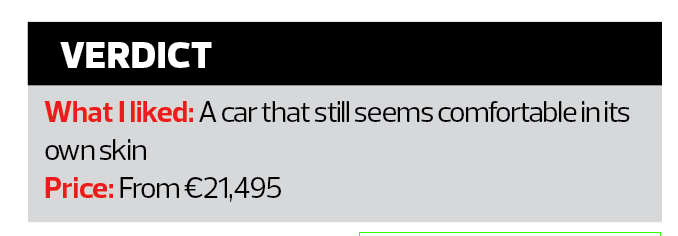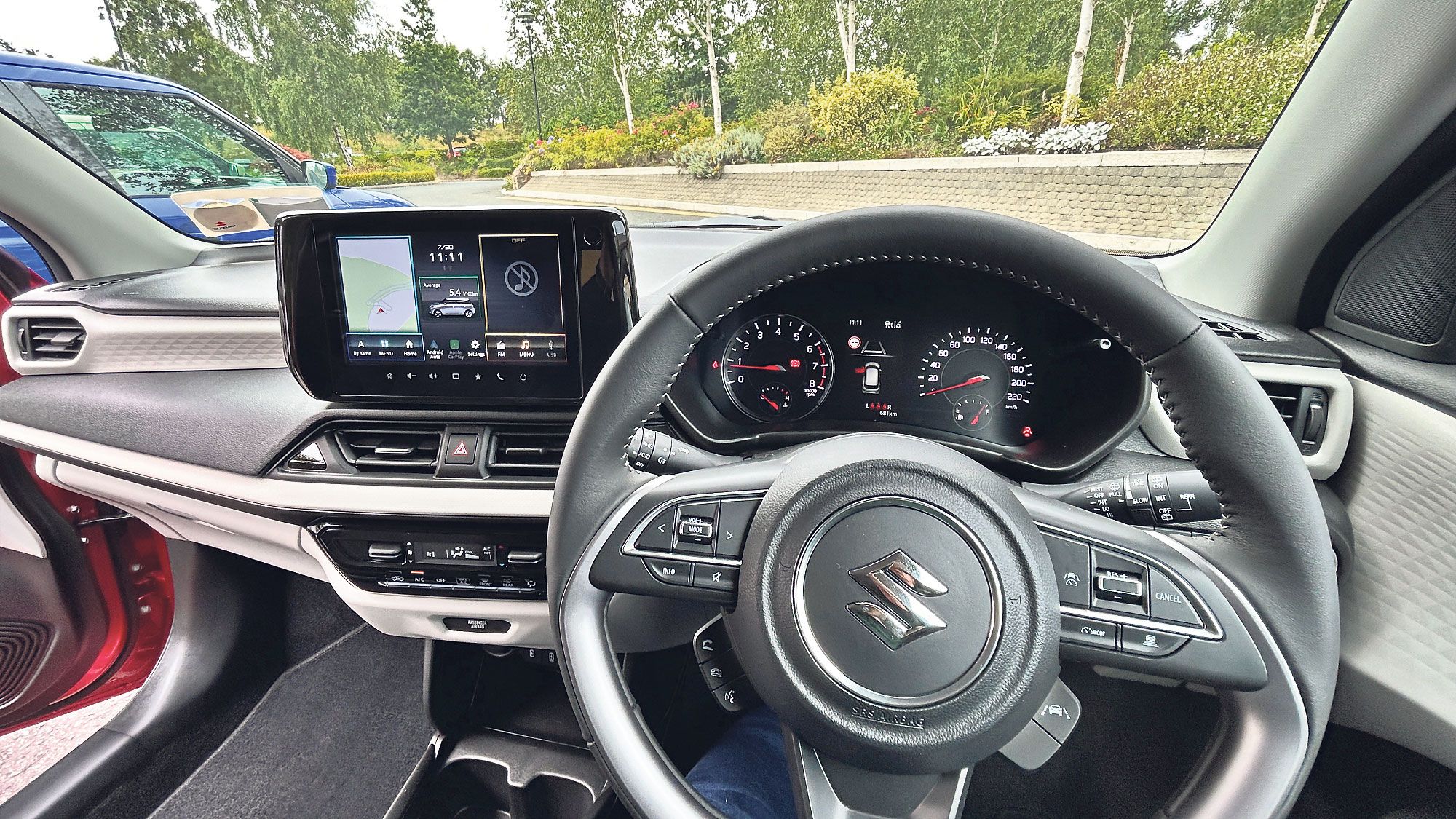BY BRIAN BYRNE
THE Suzuki Swift nameplate has been around for a marginally longer time than I have been involved in reviewing cars, celebrating its 40th anniversary this year and initially being an export version of the Japanese market Cultus model.
For the modern Swift, developed as a totally new global car, things began 20 years ago with a tidy supermini debuting at the 2004 Paris Motor Show.
With smart looks and minimal fussiness, it has served its maker well in many markets, including Europe.
In Ireland, though a small seller in the big picture of crossover-SUV preferences, the model’s sales have almost doubled since the pre-pandemic 2019, and now there is a new fourth generation to build on that. The local ambition is to double Swift sales again and achieve a top 10 position in the segment.
It is worth remarking that the Swift is an excellent example of gentle style and size evolution.
Put the latest one against the 2004 version and the familial cues have remained strong. In sizing, there has been virtually no bloat — a little longer and wider and with an increased wheelbase, it is also lower than that first car.

Still on the same platform as introduced on the outgoing version, a new treatment of the front lights-grille and bonnet is an effective upshift for the car’s visual presence, while a change back to ‘proper’ rear door handles rather than the concealed in the C-pillar versions of Generation 3 allows a small extension of glass area that perceptively lengthens the look. That is helped by an integrated rear hatch spoiler.
There’s a significant improvement inside, with brighter 2-tone dashboard and trim details lightening what had traditionally been a quite dark interior in Swifts. More important, the full colour infotainment and driver instruments are now right up to the quality and information provision expected and required by today’s
buyers.

There are improved seats, the front ones heated. Electric rear windows are also standard, as are rear parking sensors and adaptive cruise control.
There’s actually a lot of new technology, though much of it is the new mandatory safety stuff including a camera watching the driver to see if they are paying attention to the road.
For this latest Swift, Suzuki is offering the car in just two grades, the main differences in the upper one relating to alloy wheels, electrically folding mirrors with integrated indicator repeat flashers and, oddly, a heater air outlet in the rear.
Suzuki Ireland are making a strong point of offering a significantly higher specification on their base model compared to entry versions of competitors from Hyundai, Skoda, Renault and MG, among others. They also offer figures claiming substantially better fuel savings.

There’s also a completely new powertrain, based on a 1.2 mild-hybrid petrol three-cylinder, with a claimed 7pc improvement in fuel economy over the four-pot of the previous generation.
A 5-speed manual is standard, but there’s also an automatic option, this time a CVT system instead of the automated manual offering on the previous car. I’m happy with that latter, though colleagues often can be sniffy about CVT. In this case, it’s actually faster to 100km/h than the manual.
Suzuki are also claiming better soundproofing and an improved ride in the latest Swift, something which I’ll try and validate when I get full time with the car.
In my introductory drive, the typical buzzy sound of the three-cylinder motor is something I actually like, and it felt like an engine that will give all of its 82hp when pushed a bit.
Suzuki Ireland are expecting their entry manual version to attract four in 10 of the car’s buyers, while a quarter of owners will opt for the automatic transmission costing €2,000 extra.








